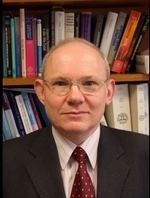Role Chemist | Name Peter Bruce Notable awards FRSFRSEFRSC | |
 | ||
Institutions University of OxfordUniversity of St Andrews Thesis Lithium ion conducting solid electrolytes (1981) | ||
Peter George Bruce FRS, FRSE, FRSC is a British chemist, and Wolfson Professor of Materials in the Department of Materials at the University of Oxford.
Contents
Education
Bruce was educated at Aberdeen Grammar School and the University of Aberdeen where he was awarded a Bachelor of Science degree in 1978 and a PhD in 1982.
Research
Bruce's primary research interests are in the fields of solid state chemistry and electrochemistry; particularly solid state ionics, which embraces ionically conducting solids and intercalation compounds. He is interested in the fundamental science of ionically conducting solids (ceramic and polymeric materials) and intercalation compounds, in the synthesis of new materials with new properties or combinations of properties, in understanding these properties and in exploring their applications in new devices, especially energy storage devices such as rechargeable lithium batteries. Although ionically conducting solids represent the starting point for much of his research, he has extended his interests beyond the confines of this subject alone.
Lithium intercalation into solid hosts is the fundamental mechanism underpinning the operation of electrodes in rechargeable lithium batteries. He seeks to synthesise new lithium intercalation compounds with unusual properties or combinations of properties. He is especially interested in nanomaterials (e.g. mesoporous solids and inorganic nanotubes) since the nanoscale can enhance the intercalation properties.
Structure is the foundation on which much of modern chemistry is based. In the absence of single crystals it is important to be able to solve structures ab initio from powder X-ray or neutron diffraction data. Together with Yuri G. Andreev he developed powerful direct space methods by which this can be achieved. Nanomaterials are important but establishing their structure (atomic arrangement) is difficult because the breakdown of long range order due to the confined dimensions negates the use of conventional crystallographic methods. They explored alternative approaches including Debye methods, which relate the atomic arrangement to the diffraction data without recourse to symmetry. All of the above methods allow access to the structures of compounds with a wealth of properties within and beyond materials chemistry.
Since the discovery of crown ethers and cryptands by Pederson, Cram and Lehn (for which they received the Nobel Prize in 1987), the significance of molecules containing the repeat units -CH2-CH2-O- as coordinating ligands for metal cations has been recognised. By combining salts and polyethers such as polyethylene oxide (-CH2-CH2-O-)n, it is possible to synthesise thousands of metal-polyether complexes, alternatively known as polymer electrolytes. Such materials are co-ordination compounds in the solid state and support ionic conductivity. For 30 years it was believed that ionic conductivity was confined to amorphous polymers above Tg and that crystalline polymers were insulators. He overturned this view with the discovery of crystalline polymer electrolytes.
Peter G. Bruce is one of the initiators of the Li-air battery. The rechargeable lithium-ion battery has revolutionised portable electronics, it will be key to electrifying transport and to delivering secure and stable renewable electricity. However the highest energy density possible for Li-ion batteries is only double that of today and this is insufficient to meet future demands. The Li-air battery can exceed this energy density.
Awards and honours
Bruce is an elected Fellow of the Royal Society of Chemistry, Fellow of the Royal Society and a Fellow of the Royal Society of Edinburgh.
His awards: Royal Society of Chemistry Award in Materials, 1999 Royal Society Wolfson Merit Award, 2001 Royal Society of Chemistry Beilby Medal, 2003 Royal Society of Chemistry Interdisciplinary Award, 2003 Royal Society of Chemistry John Jeyes Lectureship and Medal, 2004 Royal Society of Edinburgh Gunning Victoria Jubilee Prize Lectureship, 2004, (awarded every 4 years and only every 12 to chemists) Royal Society of Chemistry Solid State Chemistry Award, 2005 Electrochemical Society (USA) Battery Division Award, 2008 Royal Society of Chemistry Tilden Lectureship, 2009 Arfvedson Schlenk Award of the German Chemical Society, 2011 Carl Wagner Memorial Award of the Electrochemical Society (USA), 2011 Akzo Nobel UK Science Award, 2012; 1st recipient Galileo Galilei Award 2012 RSC Barker Medal 2014 International Medal for Materials Science and Technology, MRSI 2015 Honorary member of Materials Research Society of India Highly Cited Researcher, 2015 and 2016, Thomson Reuters RSC Liversidge Award, 2016 Royal Society Hughes Medal, 2017
